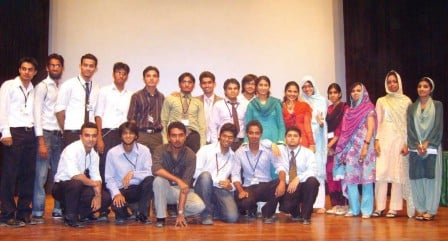1. DUET Karachi
- The Dawood University of Engineering and Technology (initials:DUET) is a publicuniversity located in the industrial area of Karachi, Sindh, Pakistan.[3]
- Established in 1962 as a public university, its initial financial endowment and foundation stone of the Dawood College of Engineering & Technology was laid by the former President of Pakistan (Late) Ayub Khan in 1962. The University was established by Dawood Foundation under the supervision of Seth Ahmed Dawood in 1964.[4] It is regarded as one of the oldest institution of higher learning in engineering and science, and offers undergraduate programmes in engineering and architecture.[5] It is one of the notable institution in Karachi and secured its placed in "engineering category" by the HEC, as of 2010.[6] The university is distinguished for its commitment and strong emphasis on energy science programmes and studies in architectural styles.[4]
2. History

- On March 2013 the Sindh Assembly passed the Sindh ACT No. XII of 2013, upgrading it to a University. Its academic and administrative control has been vested in the Syndicate, Senate and Academic Council as per ACT. The Vice- Chancellor is the Principal Executive and Academic Officer of the University.
3. About Campus
- Dawood University of Engineering and Technology has two campus. Main campus where all engineering programs are conducted. Another campus is Iqbal campus where architect and planning program is conducted.[7] The University offers four year degree programs in the field of engineering and Five year in the Field of architecture.
- The Engineering departments include Electronics, Chemical, Industrial & Management and Metallurgy & Materials. From the session 2010–2011, the University has introduced four new departments namely Energy & Environment, Petroleum & Gas, Telecommunication, and Computer System Engineering.
- The University has two campuses, one located near Quaid-e-Azam Mausoleum and the other situated at Block-17 Gulshan-e-Iqbal, Karachi. These campuses comprise various facilities including class rooms, state of the art lending and reference libraries, laboratories, workshops, drawing halls, Students cafeteria, auditorium, with a capacity of 650, seminar rooms girls common room etc.
4. Faculty and Departments
The university offers B.E. degree programs. It has nine main departments:
- B.E Petroleum & Gas Engineering
- B.E Chemical Engineering
- B.E Electronics Engineering
- B.E Telecommunication Engineering
- B.E Computer System Engineering
- B.E Industrial Engineering & Management
- B.E Metallurgy & Material Engineering
- B.E Energy & Environment Engineering
- B.arch Architecture & Planning











